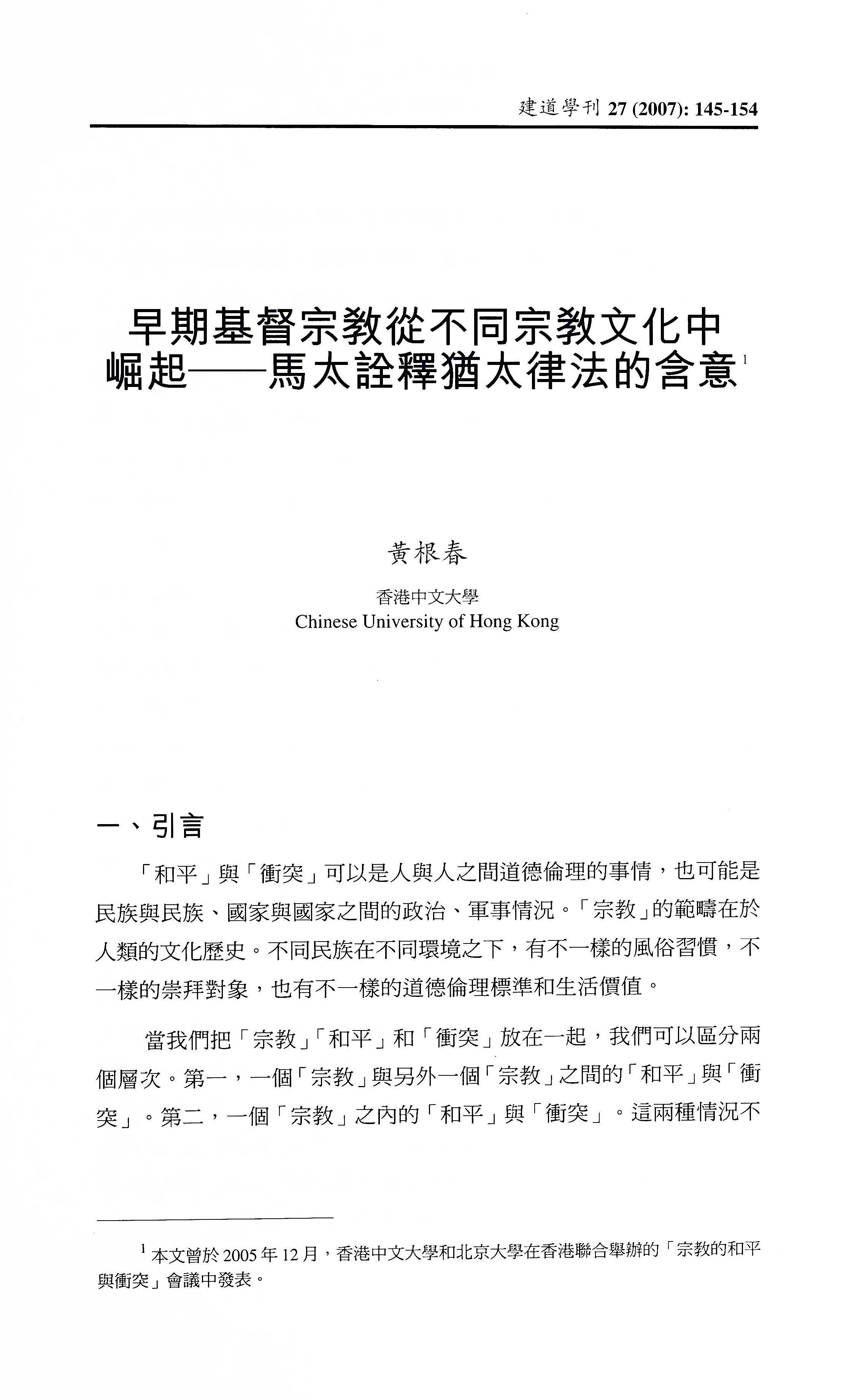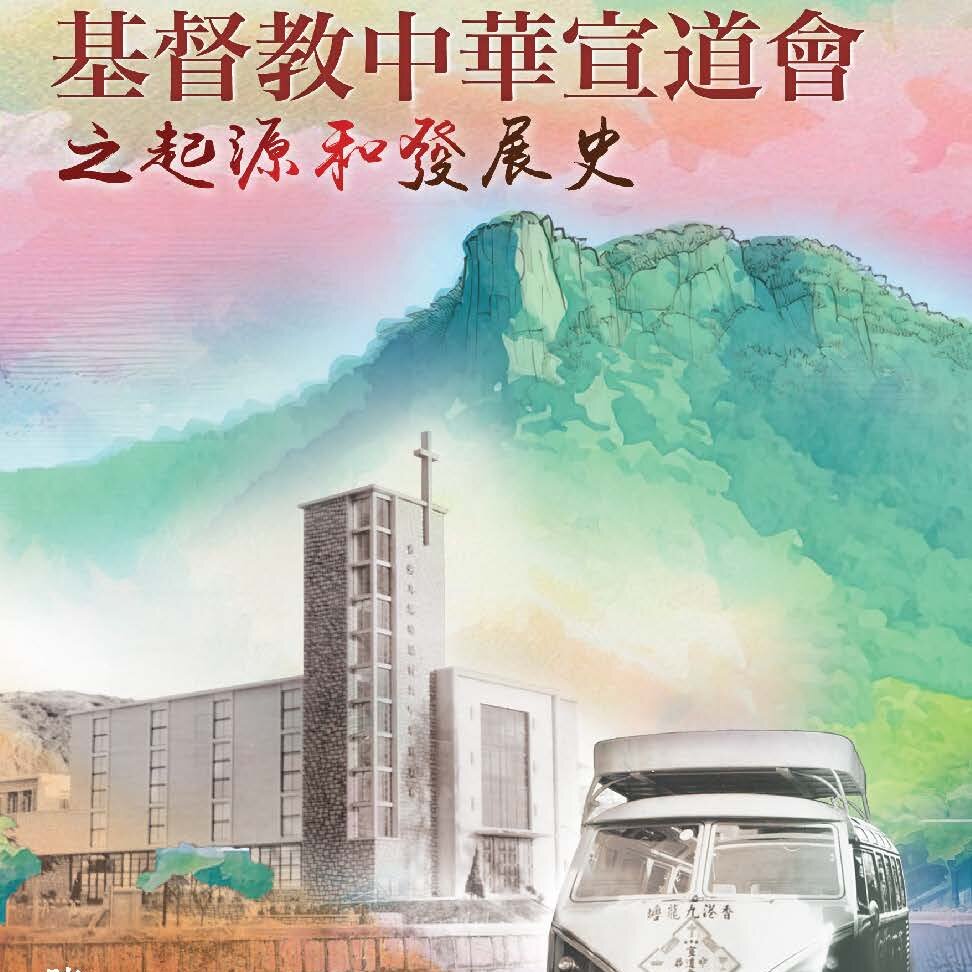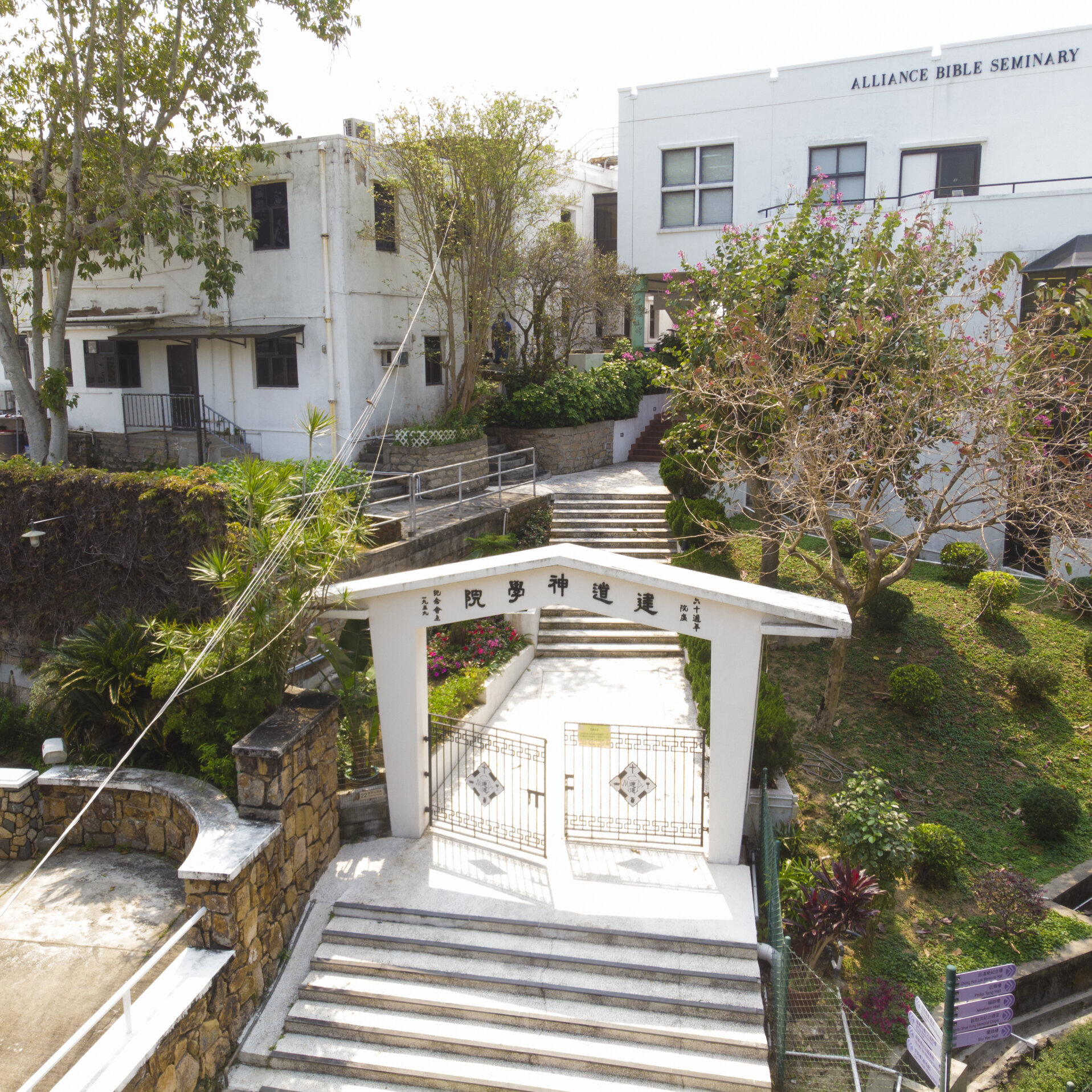早期基督宗教從不同宗教文化中崛起—馬太福音詮釋猶太律法的含義 /黃根春
撮要
宗教並不存在於沒有人居住的社會中,它們是一系列始於人的信念和價值觀。在不同的宗教價值中,衝突或張力是不可避免的。衝突可以發生於宗教與宗教之間,也可以是宗教內部之中的。基督宗教也不例外。當它在第一世紀崛起時,有它特定的希羅世界,特別是猶太教的背景。早期基督宗教其中一項重大的課題就是猶太與外邦基督徒之間的張力或衝突。
這篇文章以猶太人和外邦人為背景,勾畫馬太證釋猶太律法,特別是「登山寶訓」一幕。「登山寶訓」的主要內容以猶太傾向的思想去解釋律法作開端,其結尾則以外邦傾向的思想解釋律法,容許猶太和外邦基督徒從自己的背景和價值觀去理解律法。馬太證釋律法可視為處理宗教內部張力或衝突的一個模式。
ABSTRACT
Religions do not exist in an empty society. They are kinds of beliefs as well as values of people. Conflicts among different religious values are inevitable. They can be inter-religions or intra-religions. Christianity is of no exception. It had its background when it first emerged in the first century, the Greco-Roman world and its immediate context of Judaism. One of the most prominent issues within early Christianity was the tension between Jewish and Gentile Christians.
This paper articulates Matthew’s interpretation of Jewish Law, in particular the Sermon on the Mount, against its Jewish-Gentile background. It is found that there is a Jewish tendency of understanding the Jewish Law at the beginning of the Sermon on the Mount, at the same time, a Gentile tendency of understanding the Jewish Law at its ending. This allows both Jewish and Gentile Christians understand the Law in their own ways according to their values and background. Matthew’s interpretation of the Law is seen as a model of dealing with intra-religious tension or conflicts.
原載於《建道學刊》27期(2007年1月),頁145-154。
Latest Articles
新手牧者研究計劃(三):新手牧者的身心靈狀態 / 盧慧儀
2025 年 11 月 19 日
個體與關係:滕近輝思想中「深化」的靈性觀 / 倪步曉
2025 年 11 月 18 日
香港九龍塘基督教中華宣道會之起源和發展史/陳智衡
2025 年 10 月 20 日
Highlights
[電子書]困境與抉擇:「建道研究中心30週年誌慶」跨學科研討會論文集/廖炳堂、倪步曉主編
2025 年 1 月 2 日
從梧州到長洲:建道神學院125年的挑戰與恩典 / 陳智衡
2023 年 10 月 1 日
微小教會的見證/高銘謙
2023 年 6 月 1 日







